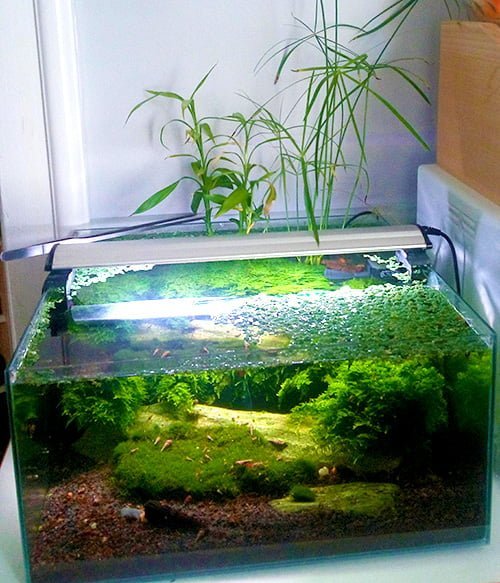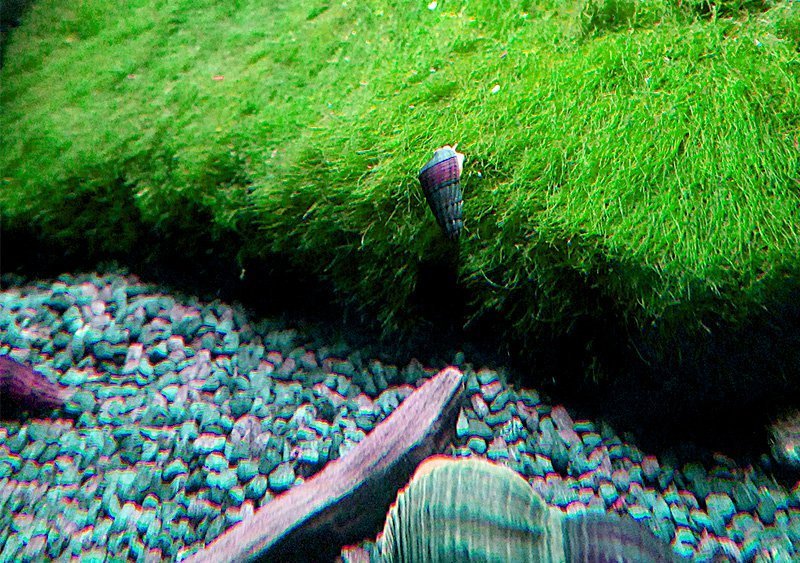Rabbit Snail Care
Everything You Need to Know
Unlike small, shy, and plain-looking aquatic snails, Rabbit Snail is big, curious, and social. They stand out with their vivid colors and distinctive markings on their shells. Their soft bodies can range from vivid yellow to charcoal black, sometimes with additional spots or streaks of color.
The rabbit snail got its name from its long, cylindrical shell that resembles a carrot. The shell also has a distinctive spiral pattern that looks like a rabbit’s ears. The scientific name is Tylomelania, which means “knobbed black” in Greek, referring to the shape and color of the shell.
Minimum Tank Size and Equipment for Rabbit Snails
When it comes to keeping Sulawesi rabbit snails, it’s important to provide them with the right environment. The typical size of is 3-5 inches long when fully grown. To accommodate their needs, a minimum tank size of 10 gallons is recommended. However, if you plan on keeping a group of them or want to provide them with more space to explore, a larger tank is always better.
In terms of equipment, a heater is essential as these snails thrive in warm water. Maintain a temperature range between 78°F and 82°F (25°C and 28°C) for optimal conditions. A gentle filter is also necessary to keep the water clean and well-circulated, but make sure the flow is not too strong as it can harm these delicate creatures.

Hardscape and Substrate for Rabbit Snails
Creating a suitable hardscape and substrate is crucial for the well-being of your snails. These snails are native to the freshwater lakes of Sulawesi, Indonesia, where they inhabit sandy and rocky areas. To replicate their natural habitat, a combination of sand and small-sized gravel is recommended.
Add some smooth rocks, driftwood, and live plants to create hiding spots and provide a natural feel to the tank. The rabbit snails will often climb on the hardscape and explore their surroundings, so ensure that everything is securely placed to prevent any accidents.

Water Parameters
Maintaining the right water parameters is essential for the health and longevity of your rabbit snails. These snails prefer slightly alkaline water with a pH level between 7.5 and 8.5. The water hardness should be around 8-12 dKH.
It’s important to note that they are sensitive to fluctuations in water parameters, so regular testing and monitoring are necessary. Keep the water clean by performing regular water changes and ensure that chlorine and heavy metals are removed using a dechlorinator.
Feeding
Rabbit snails are omnivorous and have a varied diet. They will graze on algae, biofilm, and decaying plant matter in the tank. However, it’s important to supplement their diet with additional food to ensure they receive all the necessary nutrients.
You can feed them sinking pellets, blanched vegetables such as zucchini or spinach, and occasionally offer them small amounts of high-quality fish or shrimp pellets. It’s important not to overfeed them, as this can lead to water quality issues. Remove any uneaten food after a few hours to prevent it from decomposing in the tank.
Tankmates

Rabbit Snail with African Dwarf Frogs
One excellent choice for tankmates is other peaceful freshwater snail species. Malaysian trumpet snails, nerite snails, and mystery snails are all compatible with Sulawesi rabbit snails. These snails have similar environmental preferences and will not compete for resources, making them ideal companions.
Small, non-aggressive fish can also coexist with Sulawesi rabbit snails. Rasboras, tetras, and guppies are popular choices. However, it’s crucial to avoid fish that may nip at the snails’ long antennae or disturb their peaceful nature. Additionally, be mindful of the fish’s size, as larger fish may accidentally harm the delicate snails. Shrimp, such as Amano shrimp and cherry shrimp, can also be suitable tankmates. These small crustaceans are peaceful and will not pose a threat to the snails. However, it’s important to note that some shrimp species may breed rapidly, potentially leading to overcrowding in the tank. They can also be combined with African Dwarf Frogs, as they are not aggressive too.
Remember to provide ample hiding spots and vegetation in the aquarium for the Sulawesi rabbit snails and their tankmates. Dense plants, driftwood, and caves will create a more natural and secure environment for all inhabitants. In conclusion, when selecting tankmates, prioritize peaceful species that share similar water parameters. By creating a harmonious community, you can enjoy the beauty and uniqueness of these captivating snails while providing them with a safe and comfortable home.
Reproduction and Breeding
Rabbit snails are known for their unique breeding behavior. Unlike many other snail species, they give birth to live young rather than laying eggs. The female snail will carry a small number of juveniles in her brood pouch for several weeks before giving birth.
To encourage breeding, provide a stable and well-maintained environment with plenty of hiding spots and a varied diet. The presence of both males and females is necessary for successful reproduction. It’s important to note that rabbit snails breed at a slower rate compared to other snail species, so be patient and allow nature to take its course.


Rabbit Snail and Possible Danger: Can Assassin Snails Eat Them?
Assassin snails are known for their predatory behavior and can pose a potential threat to rabbit snails. These snails actively hunt and feed on other snail species, including rabbit snails. Therefore, it’s not recommended to keep them together in the same tank.
If you want to ensure the safety of your rabbit snails, it’s best to keep them in a separate tank or choose tankmates that are not predatory in nature.
Rabbit snails are curious and active creatures that like to explore their tank, but sometimes they can get into trouble with filter intake. If they get sucked into the filter, they can get injured or even die. To prevent this, you can use coarse sponge pre-filters to cover the filter intakes. This will protect your rabbit snails from getting harmed, while still allowing the water to flow through the filter.
Conclusion
With proper care and attention, Sulawesi rabbit snails can thrive in your aquarium. By providing them with the right tank conditions, a suitable diet, and compatible tankmates, you can enjoy the beauty and uniqueness of these fascinating snails.
Frequently Asked Questions
Do Rabbit Snails Reproduce Asexually?
- No, rabbit snails do not reproduce asexually. They require both male and female snails to reproduce and give birth to live young.
What Do Baby Rabbit Snails Look Like?
- Baby rabbit snails look like miniature versions of their adult counterparts. They are typically around 0.5 inches (1.3 cm) in size and have a similar shape and coloration.
What Do Rabbit Snail Eggs Look Like?
- Rabbit snails do not lay eggs like many other snail species. Instead, the female carries the developing young in a brood pouch until they are ready to be born.


0 Comments